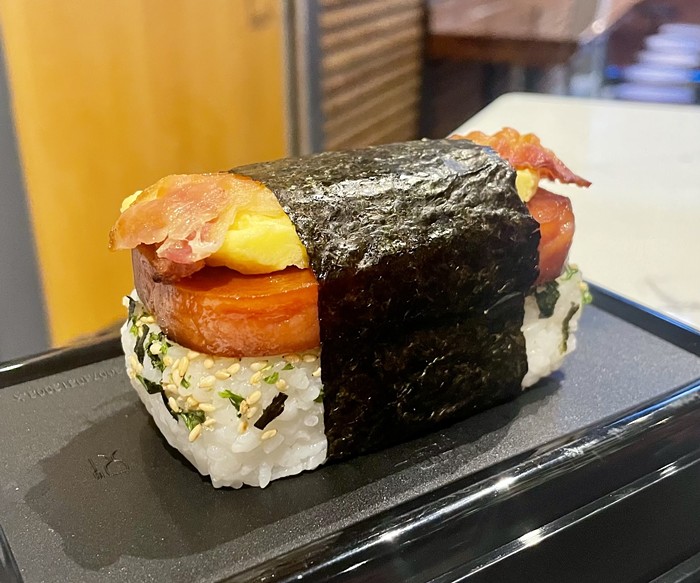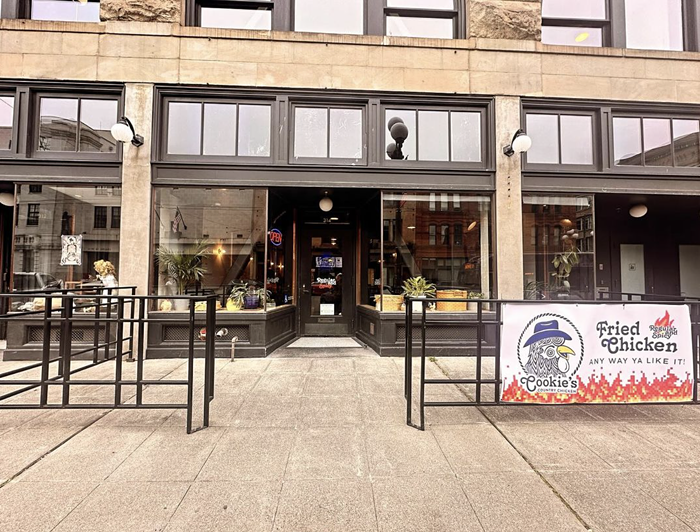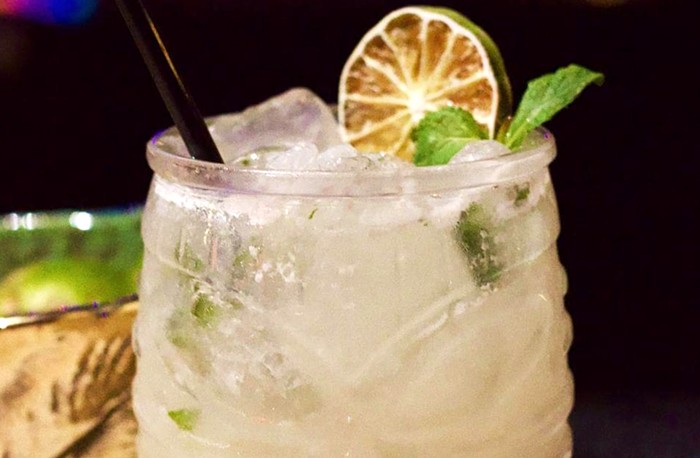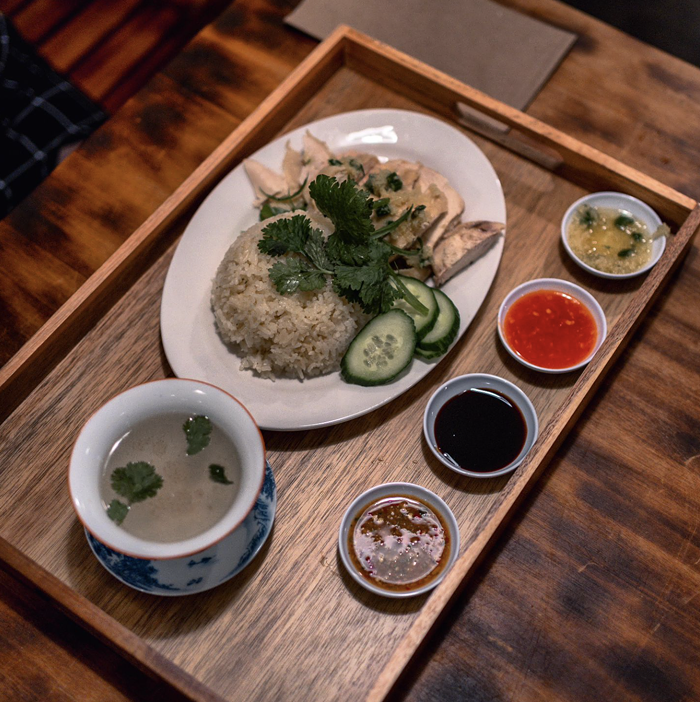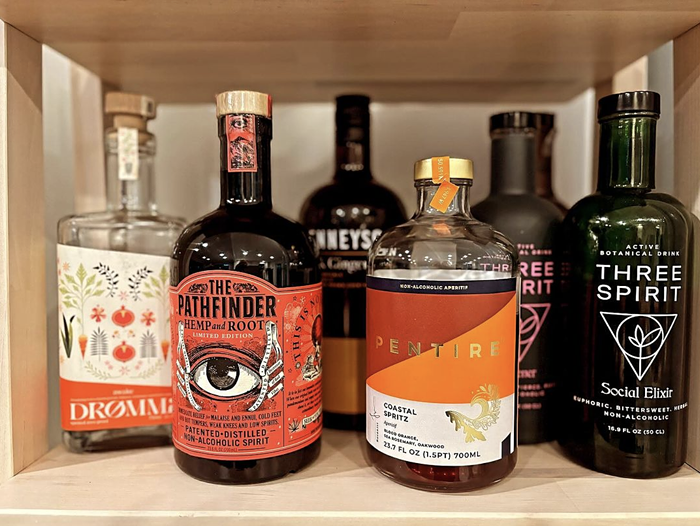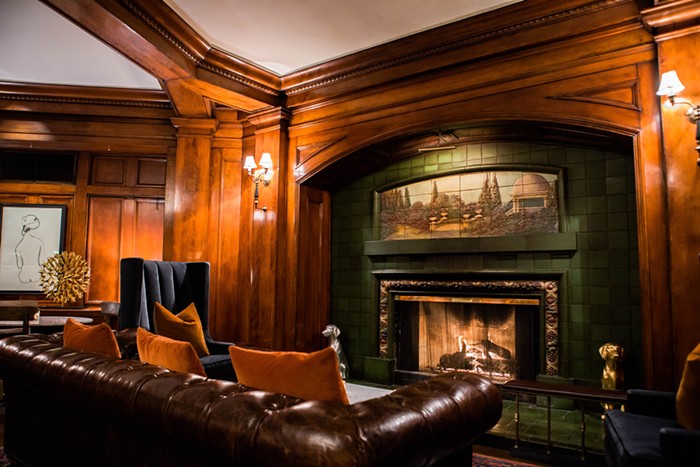I've been hearing about the pupusas from the Salvadorean Bakery in the South Seattle neighborhood White Center for a long time. Last fall, it seemed like everyone I encountered—friends, acquaintances, random people at parties—were singing the praises of these stuffed corn cakes that are a staple of Salvadoran food. Among intrepid Seattle eaters, the Salvadorean Bakery enjoys a cultish devotion. A few months ago, I finally made the pilgrimage. It may be heresy to say so, but the pupusas were disappointing.
"We must go to Burien," my friend Mike proclaimed when I confessed my disappointment in White Center's pupusas. "Burien," he declared, "is the new White Center."
Mike is easily excitable and prone to dramatic declarations, particularly when food is involved. One of our first conversations revealed our mutual love of lamb, cooking, and restaurants in the International District. We envisioned starting an eating group so we could share our favorite foods and discover new ones; there was brief talk of writing a manifesto. Our group (Mike, me, two friends/chefs, and one insatiable vegetarian) explored the culinary delights of dim sum on MLK, the Eastern European delis of Bellevue, and the Indian sweets of Renton. And, now, Burien.
Burien—11 miles south of Seattle, population 31,881—is a fascinating, dynamic community. Among the many ongoing construction projects is the ambitious $138 million Burien Town Square—an undertaking of the King County Library System and Housing Authority and the private businesses Urban Partners and Westport Capital Partners—that aims to be a "new, exciting, vibrant place to live, work, shop, play, read, and have fun for the whole family."
The 1990 and 2000 censuses show that while Burien's population has grown only slightly, the proportion of minorities has swelled from 11 percent to 26 percent. The percentage of foreign-born residents has more than doubled; one out of ten Burien residents claims to not speak English well. Immigrants were drawn to Burien by job opportunities (mostly factory work: fabrics, packaging, cleaning fish) and affordable housing. They were joined by family and friends from their home countries, as well as California and Arizona. Old communities were reunited; new communities were formed.
On the corner of Burien's Ambaum Boulevard Southwest and Southwest 153rd Street, there's a wide spray-painted pole depicting a bright orange sunset, dolphins frolicking in rippling blue water, and palm trees. It's topped with a sign, also featuring an orange sunset and palm trees, that reads, curiously, Taste of Fiji Indian Cuisine (653 SW 153rd St, 444-0405). Outside the locked doors of this restaurant whose mysterious fare can only be known through private events, you don't need to look far for other diverse eating options. Barely one block north, in a frighteningly square, squat building whose vanilla pudding–colored vinyl siding and dingy awning barely cling to their frames, the Wah Long Sport Bar Restaurant (15220 Ambaum Blvd SW, 244-1499) offers beer and egg rolls. Just up the street from Wah Long is Middle Eastern grocery store Sahara Market (660 SW 152nd St, 241-7307), which occupies the same building as Sabor Chapin, a tiny restaurant serving "Mexican American Guatemalan Dish." A short block north of Sabor Chapin is AAA Polynesian Deli & Store (810 SW 151st St, 214-0414), where you can buy corned beef, corned mutton, camp pie luncheon loaf, and cans of Filipino favorite Ligo-brand sardines. In the back is a steam-tray deli of hot, homemade Polynesian food like roast pig, braised turkey tails, mackerel and taro stewed in thick coconut milk. (If you're lucky, chatty, and curious enough, the big sweet dudes of AAA might assemble you a generous sample plate of these rich, nap-inducing dishes.)
My quest for the superior pupusa was fulfilled at Salva Mex Pupuseria y Comida Mexicana (15019 Ambaum Blvd SW, 988-1234), which serves some of the tastiest food in Burien. The owner, a huggable sort of man with soft presence and wavy white hair, takes all the orders, brings each table a jar of housemade cortida, and delivers a marvelous, moist puerco tamale (filled with a few surprise garbanzo beans) that's so good you look forward to dreaming about it later. I could happily eat only Salva Mex's fried yucca and chicharrón for the rest of my life; the sweetness of subtle, starchy yucca and beloved pork fat combine to make a perfect savory bite.
There's a wealth of Chinese and Mexican restaurants in Burien. Though these places differ wildly, they are the primary archetypes of the city's ethnic restaurants.
Asians are the longest-standing immigrant population of the Pacific Northwest; some Asian-owned establishments in Seattle have been open since the early 1900s (with the exception of some brief closures during World War II when many people were sent to internment camps). Burien's Chinese restaurants are stalwart and familiar and most seem to include a dark bar that brings to mind the old phrase "if these walls could talk...." At a few spots, mouthy, weathered women behind the bar serve stiff drinks to decidedly white, middle-aged townies. Wah Kue Cafe (13434 First Ave S, 242-5454), in business proudly since 1950, is the ideal model: an unintimidating menu including chop suey, broccoli beef, and such "American dishes" as breaded veal cutlet and a ham sandwich. Then there's Wah Kue's bar, the On Luck Room, a beautiful den of lanterns, liquor, and endless surfaces of red and black lacquer. The On Luck Room might be the most gorgeous, improbable bar in King County; at 4:00 p.m. on a Tuesday it fills up with regulars ordering sweet-and-sour chicken and cocktails called the Dirty Mother.
The Dragon Pearl Restaurant & Lounge (15304 First Ave S, 246-0776) is just plain dirty. Walls are stained; tables are cluttered. The egg rolls taste like nothing, but you eat them all anyway.
Burien's Latino population has seen the most significant growth—an astounding increase of 255 percent between 1992 and 2002. Latinos have surpassed Asians, becoming the largest minority community in the city. Lupita Ayon, a nine-year Burien resident and director of Para Los Niños, a local nonprofit that works with Latino parents and students in the schools (Latino enrollment in public schools went from 6.5 percent to 20 percent in 10 years), has experienced this growth firsthand. The most noticeable change, says Ayon, is that formerly quiet, empty streets are now filled with people, on foot and in cars. What used to be a 5-minute trip across town now takes her 15, and she's likely to run into someone she knows along the way.
Burien's taquerias are bustling eateries brimming with meaty, spice-scented air, the juicy drama of telenovelas playing on high-mounted television sets, and the rapid-fire Spanish of everyone in the restaurant, all of whom seem to know each other, all of whom are eating something that looks delicious, that you want to eat, only you don't know what it is.
The buildings themselves feel odd because the taquerias set up shop in old restaurant spaces, but didn't change anything. Taqueria La Estacion (14820 Ambaum Blvd SW, 439-3944), where the nicest, slowest old man in town runs the register, is in a yellow mission-style building that was probably once a Taco Bell. It has a phantom drive-through window that just sits there, taking up space in the tiny parking lot. Taqueria El Rinconsito (214 SW 152nd St, 431-0663), which makes a mean lengua taco, is in a building that looks like a giant, green, misshapen sombrero.
While perusing Chowhound, I came across this delightful query: "Does anyone know where I can get a whole small pig for roasting in the Seattle area?" The answer: "I believe many of the Mexican markets can get you a whole, small pig. Try Wayne's Grocery in Burien."
Burien's diversity is easily seen in the abundance of closely concentrated ethnic restaurants. But this diversity starts where the cooking starts—in ingredients, at the market. Wayne's Fruits & Vegetables (144 SW 152nd St, 988-1996) is more than good, cheap produce; it's a Mexican grocery, a treasure trove of Asian sauces (18 different brands of fermented fish sauce, by my count), an epic meat selection (pig ears, cow livers, chicken feet, and pork fat!), and an impressive fresh seafood mart. It also houses a Russian deli selling pastries and smoked herring and a Chinese fry station where you can get hot, fresh chow mein. The people shopping at Wayne's, negotiating the small aisles and brushing into one another, are petite young Vietnamese mothers, cologne-laden Mexican dudes, and old men in turbans with white beards.
On my first trip to Burien with Mike, he was momentarily concerned that Wayne's had been torn down. That's because nearby there's a giant, multiblock hole in the middle of downtown where Burien Town Square is being built. Ayon says that the city's revitalization and development is driving housing prices up and people can no longer afford to live in Burien. When asked where people will go, she promptly replies, "They'll move south to Tukwila, SeaTac, and Des Moines, just like when they improved White Center and people moved down to Burien."
The pattern of displacement is difficult for the community, but it is certain. When the taquerias move south, I will follow. See you in SeaTac. ![]()
